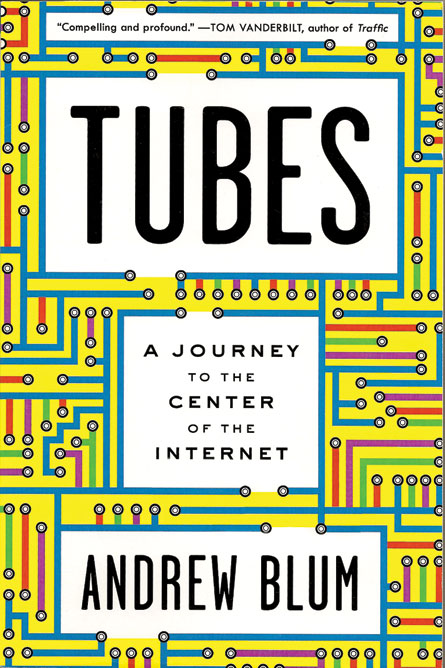BOOK REVIEW: Tubes: A Journey to the Center of the Internet by Andrew Blum
Review by Sid Perkins
The Internet seems to be everywhere, thanks to the wonders of Wi-Fi: the home office, the local coffee shop, even aircraft cruising at 30,000 feet. Yet the largest technological construction that people interact with on a daily basis has its limits. It is, after all, a network of parts and pieces, from dusty desktop routers and squirrel-gnawed phone lines to transoceanic cables and enormous data storage centers.

Inspired by an Internet outage in his neighborhood one cold winter day, science writer Blum embarked on a journey to visit the invisible realm beyond his computer screen. His expedition took him from the equipment beside his couch to a battleship-gray junction box on a telephone pole behind his apartment building and beyond.
In this charming chronicle, Blum reveals the inner workings of the Internet — how, as U.S. Sen. Ted Stevens of Alaska described it in 2006, a “series of tubes” shuttles information via massive hubs in metropolitan areas. Though Stevens was ridiculed by late-night comics at the time, Blum notes that he was largely right: Much of the Internet’s data traffic travels via tubes filled with copper wires or fiber-optic cables.
Born as a tenuous connection between computer networks at Stanford and UCLA in 1969, the Internet is now a robust network used by more than 2 billion people a day. Tubes is an absorbing tale of this new technology, as well as a wonderful account of the Internet’s growth and the people who made it possible.
Ecco, 2012, 304 p., $26.99